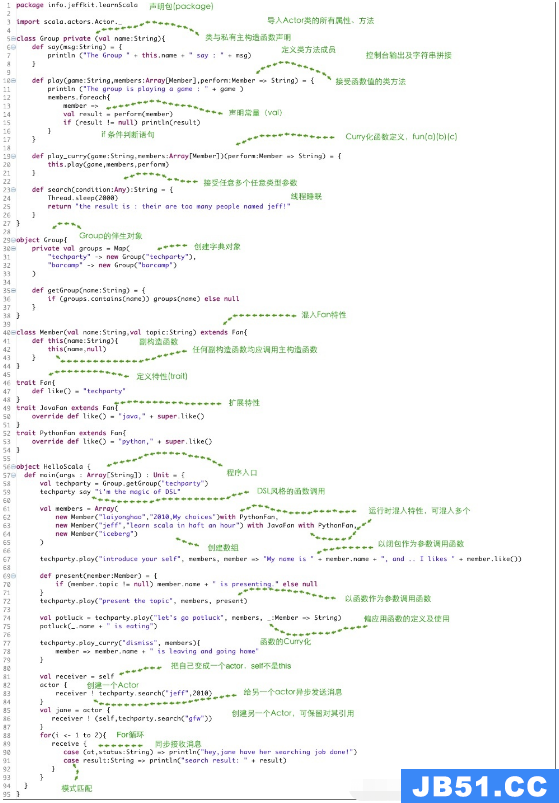以下是在
Scala和Clojure中编写的函数,以便简单地替换字符串中的模板.每个函数的输入是包含{key}形式的模板和从Symbol / Keyword到替换值的映射的String.
例如:
斯卡拉:
replaceTemplates("This is a {test}",Map('test -> "game"))
Clojure的:
(replace-templates "This is a {test}" {:test "game"})
将返回“这是一个游戏”.
输入图使用符号/关键字,所以我不必处理字符串中的模板包含大括号的角落的情况.
不幸的是,算法效率不高.
这是Scala代码:
def replaceTemplates(text: String,templates: Map[Symbol,String]): String = {
val builder = new StringBuilder(text)
@tailrec
def loop(key: String,keyLength: Int,value: String): StringBuilder = {
val index = builder.lastIndexOf(key)
if (index < 0) builder
else {
builder.replace(index,index + keyLength,value)
loop(key,keyLength,value)
}
}
templates.foreach {
case (key,value) =>
val template = "{" + key.name + "}"
loop(template,template.length,value)
}
builder.toString
}
这里是Clojure代码:
(defn replace-templates
"Return a String with each occurrence of a substring of the form {key}
replaced with the corresponding value from a map parameter.
@param str the String in which to do the replacements
@param m a map of keyword->value"
[text m]
(let [sb (StringBuilder. text)]
(letfn [(replace-all [key key-length value]
(let [index (.lastIndexOf sb key)]
(if (< index 0)
sb
(do
(.replace sb index (+ index key-length) value)
(recur key key-length value)))))]
(doseq [[key value] m]
(let [template (str "{" (name key) "}")]
(replace-all template (count template) value))))
(.toString sb)))
replaceTemplates("""
Lorem ipsum dolor sit amet,consectetur adipiscing elit. Pellentesque
elit nisi,egestas et tincidunt eget,{foo} mattis non erat. Aenean ut
elit in odio vehicula facilisis. Vestibulum quis elit vel nulla
interdum facilisis ut eu sapien. Nullam cursus fermentum
sollicitudin. Donec non congue augue. {bar} Vestibulum et magna quis
arcu ultricies consectetur auctor vitae urna. Fusce hendrerit
facilisis volutpat. Ut lectus augue,mattis {baz} venenatis {foo}
lobortis sed,varius eu massa. Ut sit amet nunc quis velit hendrerit
bibendum in eget nibh. Cras blandit nibh in odio suscipit eget aliquet
tortor placerat. In tempor ullamcorper mi. Quisque egestas,metus eu
venenatis pulvinar,sem urna blandit mi,in lobortis augue sem ut
dolor. Sed in {bar} neque sapien,vitae lacinia arcu. Phasellus mollis
blandit commodo.
""",Map('foo -> "HELLO",'bar -> "GOODBYE",'baz -> "FORTY-TWO"))
并输出:
Lorem ipsum dolor sit amet,HELLO mattis non erat. Aenean ut elit in odio vehicula facilisis. Vestibulum quis elit vel nulla interdum facilisis ut eu sapien. Nullam cursus fermentum sollicitudin. Donec non congue augue. GOODBYE Vestibulum et magna quis arcu ultricies consectetur auctor vitae urna. Fusce hendrerit facilisis volutpat. Ut lectus augue,mattis FORTY-TWO venenatis HELLO lobortis sed,in lobortis augue sem ut dolor. Sed in GOODBYE neque sapien,vitae lacinia arcu. Phasellus mollis blandit commodo.
该算法横跨输入图,对于每对,在输入String中替换,暂时保存在StringBuilder中.对于每个键/值对,我们搜索键的最后一个出现(括在大括号中),并将其替换为值,直到不再出现.
如果我们在StringBuilder中使用.lastIndexOf与.indexOf,它是否会产生任何性能差异?
如何改进算法?编写Scala和/或Clojure代码有更为惯用的方法吗?
更新:见我的follow-up.
更新2:这是一个更好的Scala实现; O(n)的长度为String.请注意,根据几个人的推荐,我将Map修改为[String,String]而不是[Symbol,String]. (感谢mikera,kotarak):
/**
* Replace templates of the form {key} in the input String with values from the Map.
*
* @param text the String in which to do the replacements
* @param templates a Map from Symbol (key) to value
* @returns the String with all occurrences of the templates replaced by their values
*/
def replaceTemplates(text: String,templates: Map[String,String]): String = {
val builder = new StringBuilder
val textLength = text.length
@tailrec
def loop(text: String): String = {
if (text.length == 0) builder.toString
else if (text.startsWith("{")) {
val brace = text.indexOf("}")
if (brace < 0) builder.append(text).toString
else {
val replacement = templates.get(text.substring(1,brace)).orNull
if (replacement != null) {
builder.append(replacement)
loop(text.substring(brace + 1))
} else {
builder.append("{")
loop(text.substring(1))
}
}
} else {
val brace = text.indexOf("{")
if (brace < 0) builder.append(text).toString
else {
builder.append(text.substring(0,brace))
loop(text.substring(brace))
}
}
}
loop(text)
}
更新3:这是一组Clojure测试用例(Scala版本作为一个练习:-)):
(use 'clojure.test)
(deftest test-replace-templates
(is (= ; No templates
(replace-templates "this is a test" {:foo "FOO"})
"this is a test"))
(is (= ; One simple template
(replace-templates "this is a {foo} test" {:foo "FOO"})
"this is a FOO test"))
(is (= ; Two templates,second at end of input string
(replace-templates "this is a {foo} test {bar}" {:foo "FOO" :bar "BAR"})
"this is a FOO test BAR"))
(is (= ; Two templates
(replace-templates "this is a {foo} test {bar} 42" {:foo "FOO" :bar "BAR"})
"this is a FOO test BAR 42"))
(is (= ; Second brace-enclosed item is NOT a template
(replace-templates "this is a {foo} test {baz} 42" {:foo "FOO" :bar "BAR"})
"this is a FOO test {baz} 42"))
(is (= ; Second item is not a template (no closing brace)
(replace-templates "this is a {foo} test {bar" {:foo "FOO" :bar "BAR"})
"this is a FOO test {bar"))
(is (= ; First item is enclosed in a non-template brace-pair
(replace-templates "this is {a {foo} test} {bar" {:foo "FOO" :bar "BAR"})
"this is {a FOO test} {bar")))
(run-tests)


